Kopnin N.B. Theory of Nonequilibrium Superconductivity
Подождите немного. Документ загружается.

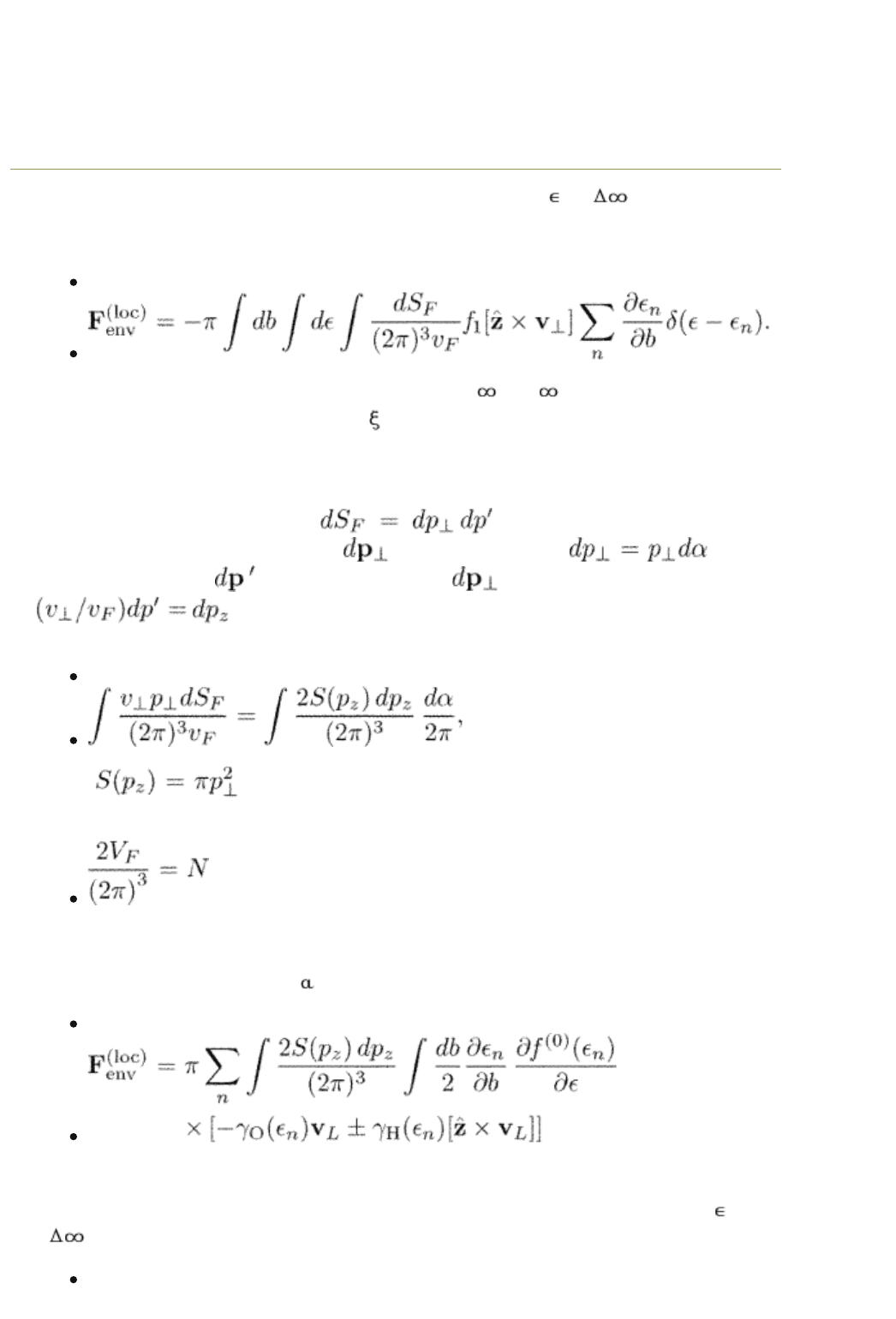
Consider first localized excitations in the vortex core with | | < . Using the
identity of eqn (14.29) we obtain the contribution from the localized excitations
to eqn (14.61)
(14.62)
The integration over db and ds is extended from – to + since the integral
converges at distances of the order of
which is much shorter than the unit cell
size. Equation (14.82) coincides exactly with eqn (14.4) obtained
phenomenologically using the concept of semiclassical particles localized in the
core.
The Fermi-surface area element
is constructed out of two
tangential momentum increments:
with the magnitude in
the (x y) plane, and
perpendicular to both and v
F
. One has
. Therefore, for a Fermi surface isotropic in the (a b)
plane,
(14.63)
where is the area of the cross section of the Fermi surface by
the plane p
z
= const. The integral in eqn (14.63) gives
where V
F
is the volume within the Fermi surface and N is the density of electrons
(or holes). Equation (14.62) reduces to eqn (14.4) for a spherical Fermi surface.
Performing the average over d
in eqn (14.82) we get with help of eqn (14.51)
(14.64)
which coincides with eqns (14.11), (14.12).
To evaluate the part of the force in eqn (14.61) for excitations with energies |
|
>
we use the identity eqn (14.34) derived earlier. We obtain
(14.65)
Kopnin, Nikolai, Senior Scientist, Low Temperature Laboratory, Helsinki University of
Technology, and L.D. Landau Institute for Theoretical Physics, Moscow
Theory of Nonequilibrium Superconductivity
Print ISBN 9780198507888, 2001
pp. [291]-[295]
Oxford Scholarship Online: Theory of Nonequilibrium Supe... http://www.oxfordscholarship.com/oso/private/content/phy...
第1页 共7页 2010-8-8 16:09
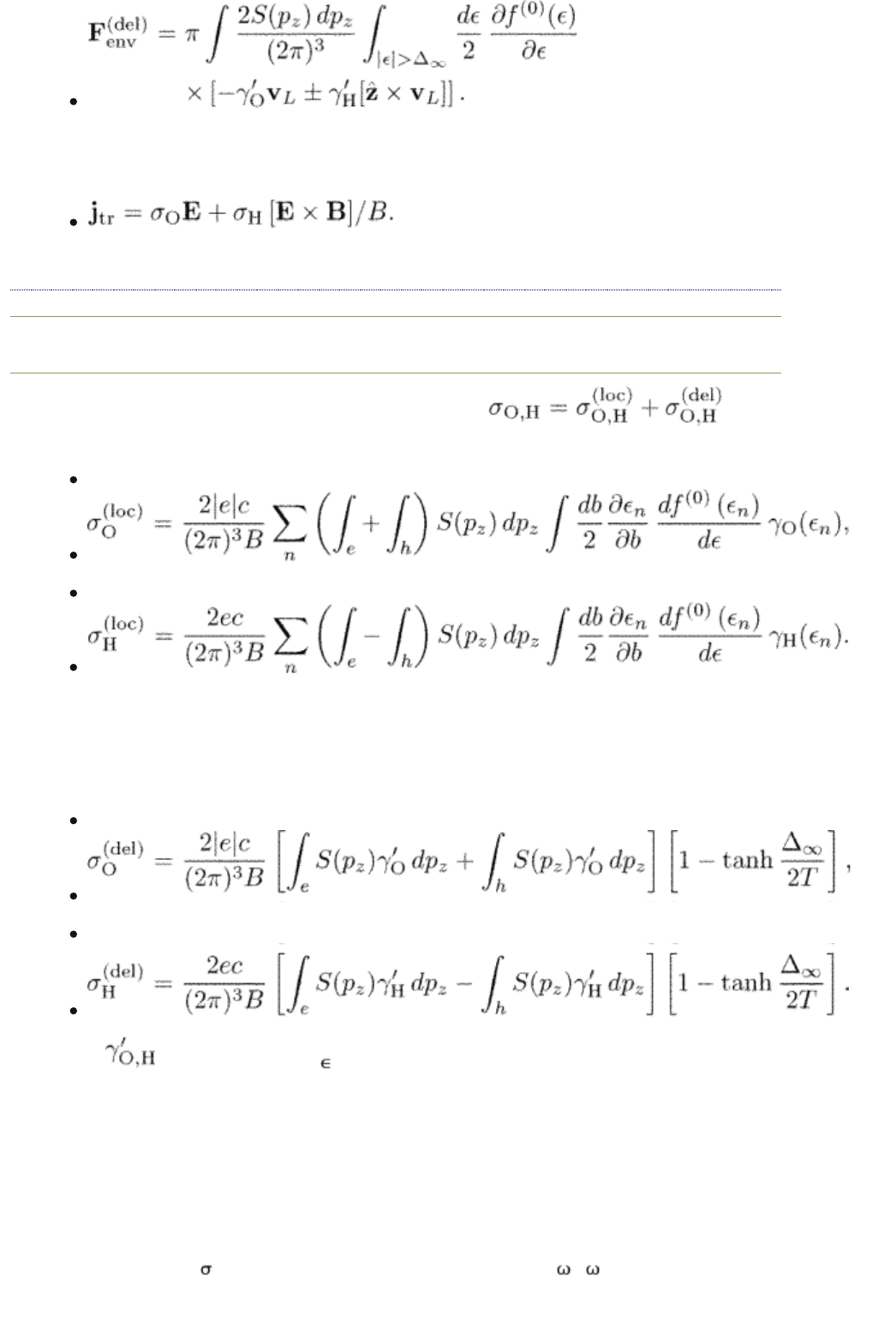
Balancing the force from environment by the Lorentz force eqn (14.8) according
to eqn (14.7) determines the transport current in terms of the electric field
end p.291
The Ohmic and Hall components of conductivity are .
The contribution from localized states is
(14.66)
(14.67)
The integrals over the Fermi surface are shown for the electron-like and hole-like
parts separately. Equations (14.66) and (14.67) coincide exactly with eqns
(14.15) and (14.16) obtained by the Boltzmann scheme.
The delocalized states give
(14.68)
(14.69)
We use as independent of .
14.6 Discussion
14.6.1 Conductivity: Low temperatures
The total conductivities are sums of the contributions from both localized and
delocalized excitations. However, the contribution from delocalized excitations is
small compared to
(loc)
in most of the cases since the ratio
c
/
0
~ H / H
c2
is
small in our limit. The exceptions are: (i) the case of very pure samples such that
PRINTED FROM OXFORD SCHOLARSHIP ONLINE (www.oxfordscholarship.com)
© Copyright Oxford University Press, 2003-2010. All Rights Reserved
Oxford Scholarship Online: Theory of Nonequilibrium Supe... http://www.oxfordscholarship.com/oso/private/content/phy...
第2页 共7页 2010-8-8 16:09

even for fields H H
c2
, (ii) the immediate vicinity of T
c
.
We start the discussion with the exact solution of the kinetic equation available
for low temperatures (14.48), (14.49). Delocalized excitations do not contribute.
Equations (14.67), (14.66) give
(14.70)
where x is determined by eqn (14.47). The electron (hole) densities are N
e,h
=
2V
e,h
/ (2 )
3
, where V
e,h
are the volumes confined within the particle- and
hole-like parts of the Fermi surface, respectively. The factors
and
are shown in Fig. 14.1 as functions of x. The Hall angle defined through tan
H
=
H/ O
is plotted in Fig. 14.2.
For a moderately clean limit, x 1, the dissipative (Ohmic) component of the
conductivity tensor can be written in a form similar to the Bardeen–Stephen
model. The upper critical field for clean superconductors at low temperatures has
been calculated by Gor’kov (1959 b)
end p.292
PRINTED FROM OXFORD SCHOLARSHIP ONLINE (www.oxfordscholarship.com)
© Copyright Oxford University Press, 2003-2010. All Rights Reserved
Oxford Scholarship Online: Theory of Nonequilibrium Supe... http://www.oxfordscholarship.com/oso/private/content/phy...
第3页 共7页 2010-8-8 16:09
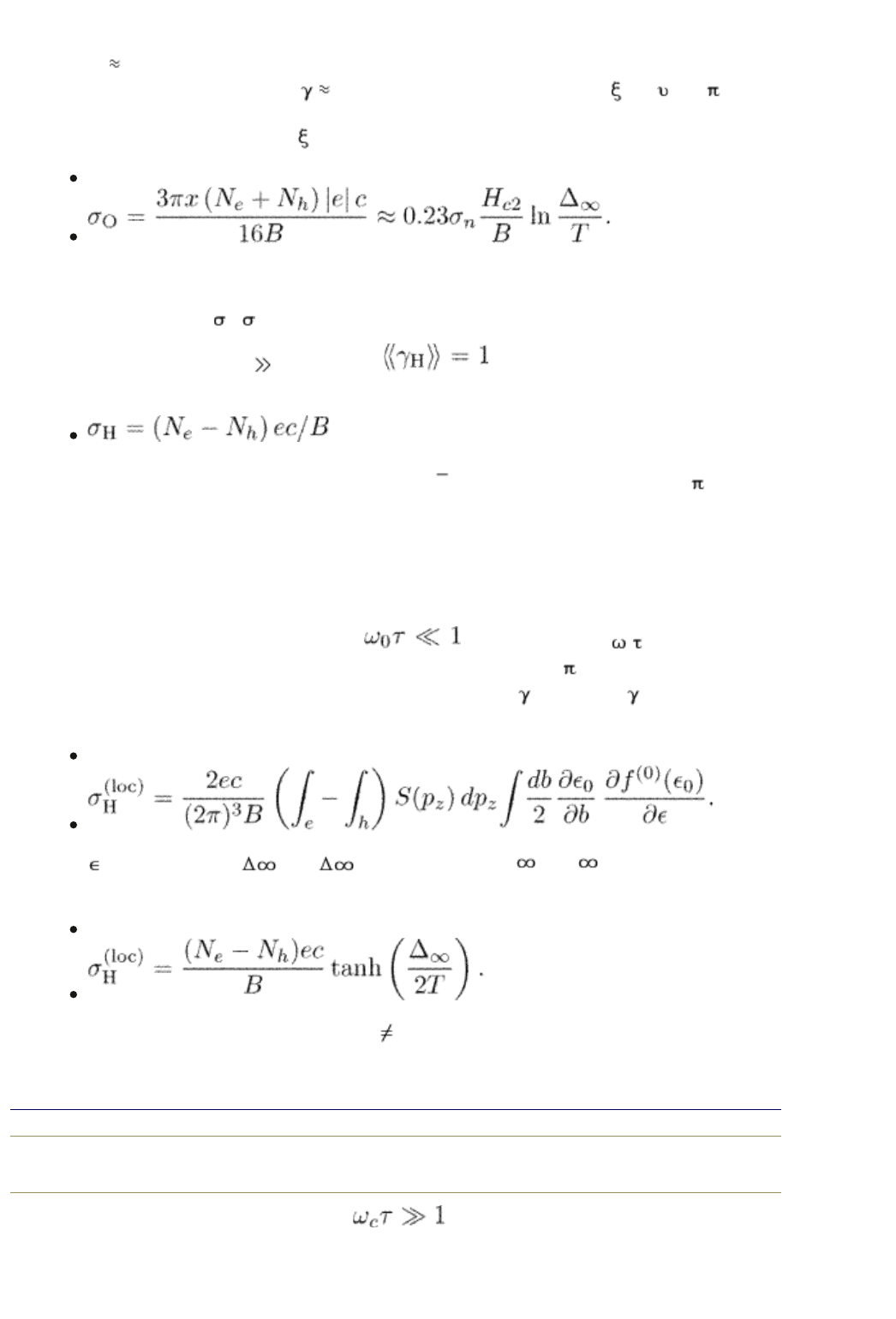
FIG. 14.2. The Hall angle as a function of the purity parameter x.
Here e
ln
2.718 is the base of natural logarithm (we denote it e
ln
to distinguish
from the electronic charge e),
1.78 is the Euler constant, and
0
=
F
/ 2 T
c
is the zero temperature coherence length. Equation (3.87) was used to write the
upper critical field in terms of
0.
We find with help of this expression
(14.71)
Equation (14.71) was first obtained by Larkin and Ovchinnikov (1976). It has an
extra logarithmic factor as compared to the Bardeen–Stephen model. The Hall
component is small,
H
/
O
~ x.
In the superclean limit x
1 the factor so that the Hall conductivity
is large
while the dissipative component vanishes as x
1
. The Hall angle is close to /2.
14.6.2 Conductivity: Arbitrary temperatures
14.6.2.1 Superclean limit
The superclean limit is reached when
. The parameter
c
can be
either small or large. In both cases the Hall angle is close to
/2. Consider first
the contribution from localized excitations. In this case
H
= 1, and
O
is small.
The Hall conductivity from the localized excitations becomes
(14.72)
Since
0
(b) runs from – to + as b varies from – to + (see Fig. 6.2),
we obtain
(14.73)
The contribution from the terms with n 0 vanishes (see the discussion on page
278).
end p.293
When the purity is so high that also the delocalized excitations eqn
(14.69) give
PRINTED FROM OXFORD SCHOLARSHIP ONLINE (www.oxfordscholarship.com)
© Copyright Oxford University Press, 2003-2010. All Rights Reserved
Oxford Scholarship Online: Theory of Nonequilibrium Supe... http://www.oxfordscholarship.com/oso/private/content/phy...
第4页 共7页 2010-8-8 16:09
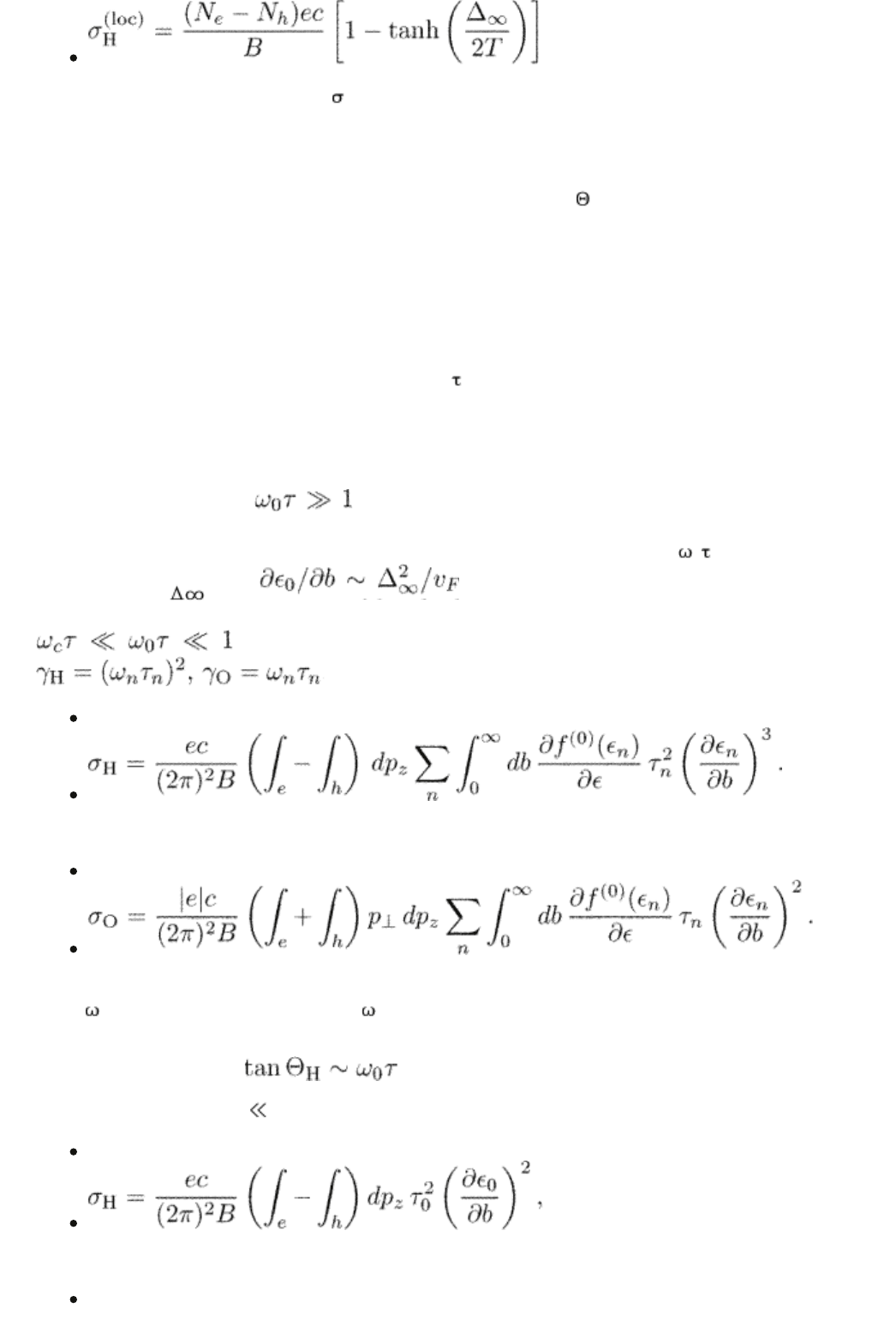
such that the total conductivity is
H
= (N
e
– N
h
)ec/B. his is exactly t he Hall
conductivity of a normal metal in a high magnetic field. The Ohmic conductivity is
small.
Despite very strong limitations on the purity of the sample, the superclean
regime has been shown to be quite realistic: for example, tan
H
of the order of
unity has been observed by Harris et al. (1994) for low temperatures. In
principle, inelastic electron–phonon (and electron–electron) relaxation can also
play a role if the impurity content is low enough. The electron–phonon
mechanism can become more effective in the superclean regime since, for
high-T
c
, superconductors, the electron–phonon relaxation rate is quite
substantial at T
c
, though it decreases rapidly for lower temperatures. It is
possible that the increase in the Hall angle towards the superclean limit observed
by Harris et al, (1994) is due to the increase in
ph
with lowering of the
temperature.
14.6.2.2 Moderately clean limit
This limit corresponds to
, and is the most common situation in clean
superconductors. Moreover, this regime is always reached as T approaches T
c
even for a very pure sample: for temperatures close to T
c
, the parameter
0 0
decreases with since . In the moderately clean limit
the conductivities are mainly determined by the localized excitations because
. One has in the moderately clean limit
. The Hall conductivity becomes
(14.74)
The Ohmic conductivity is
(14.75)
The largest contribution in eqns (14.74) and (14.75) comes from the term n = 0
since
n
is considerably smaller than
0
according to numerical results by Gygi
and Schlüter (1991).
The Hall angle is small:
.
For low temperatures, T
T
c
,
(14.76)
where the derivative of the energy is taken at b = 0. The Ohmic conductivity is
(14.77)
Oxford Scholarship Online: Theory of Nonequilibrium Supe... http://www.oxfordscholarship.com/oso/private/content/phy...
第5页 共7页 2010-8-8 16:09
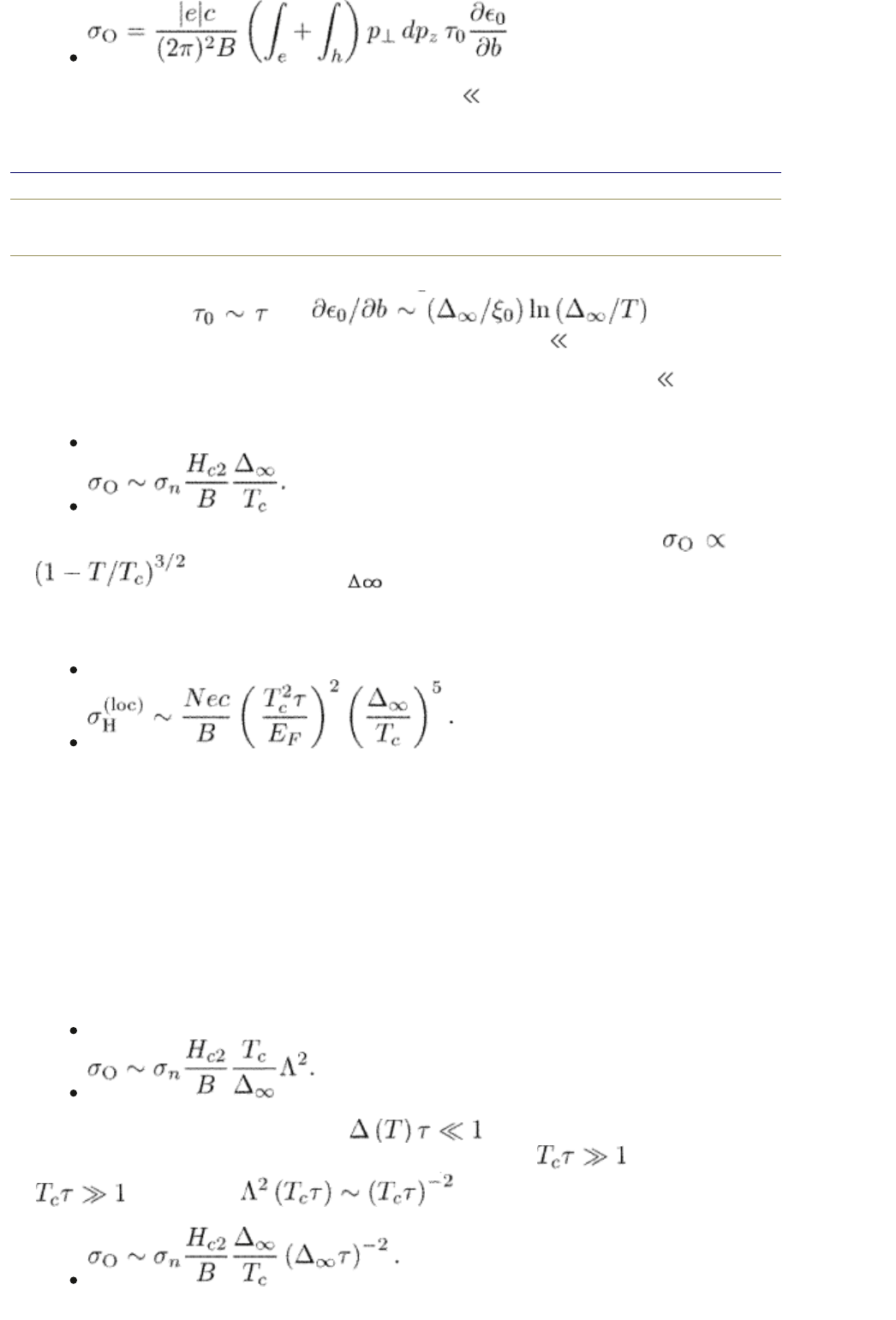
since only the level with n = 0 is important for T T
c
. These expressions are
generalizations of the results obtained earlier for low temperatures by the exact
end p.294
solution of the kinetic equation assuming the Kramer–Pesch contraction of the
vortex core. With
and , eqns
(14.76) and (14.76) agree with eqns (14.70) in the limit x
1.
For temperatures close to T
c
, the Ohmic conductivity eqn (14.75) for B H
c2
is
(Kopnin and Lopatin 1995)
(14.78)
Equation (14.78) implies a temperature dependence of the conductivity
. The extra factor /T
c
in eqn (14.78) as compared to the
Bardeen–Stephen model has indeed been observed experimentally by Kambe et
al. (1999). The Hall conductivity near T
c
is
(14.79)
It is proportional to (1 – T/T
C
)
5/2
. This temperature dependence has been
confirmed experimentally by Kim et al, (1996).
The temperature dependence of the flux-flow conductivities in clean
superconductors differs from that obtained using the TDGL model (see Section
12.5). This is not unexpected because the TDGL model does not work for clean
superconductors. Moreover, eqn (14.78) differs also from the prediction of the
microscopic theory for dirty superconductors near T
c
(see Section 13.2).
However, the microscopic results for dirty superconductors transform into
expression (14.78) for clean superconductors at the border where these two
limiting cases meet. Equation (13.25) of Section 13.2 can be written as
(14.80)
Equation (14.80) is valid as long as . To match it with eqn
(14.78) we need to take eqn (14.80) in the regime when
. For
the function thus eqn (14.80) becomes
PRINTED FROM OXFORD SCHOLARSHIP ONLINE (www.oxfordscholarship.com)
© Copyright Oxford University Press, 2003-2010. All Rights Reserved
Oxford Scholarship Online: Theory of Nonequilibrium Supe... http://www.oxfordscholarship.com/oso/private/content/phy...
第6页 共7页 2010-8-8 16:09
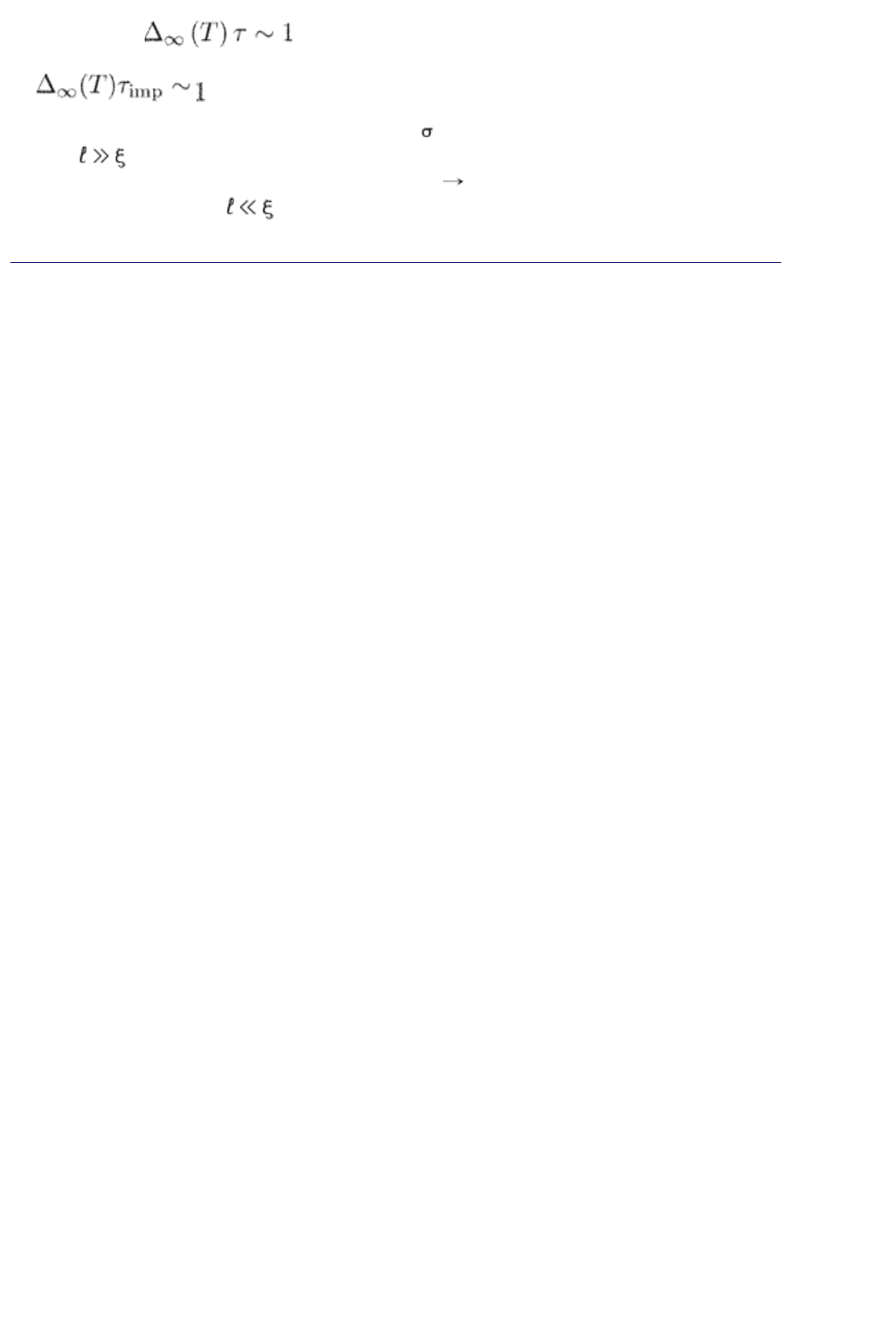
We can set that this expression transforms into eqn (14.78) at the limit of its
applicability
. Equation (14.78) also transforms into eqn
(12.59) obtained in Section 12.8.2 for a clean d-wave superconductor if we put
in eqn (14.78).
The reason for the different dependences of
o
is that, for clean superconductors
with
(T), the main contribution to conductivity comes from localized
excitations only whose number decreases as T
Tc. On the contrary, in dirty
superconductors with
, all the excitations contribute to the conductivities.
end p.295
Top
Privacy Policy and Legal Notice © Oxford University Press, 2003-2010. All rights reserved.
Oxford Scholarship Online: Theory of Nonequilibrium Supe... http://www.oxfordscholarship.com/oso/private/content/phy...
第7页 共7页 2010-8-8 16:09
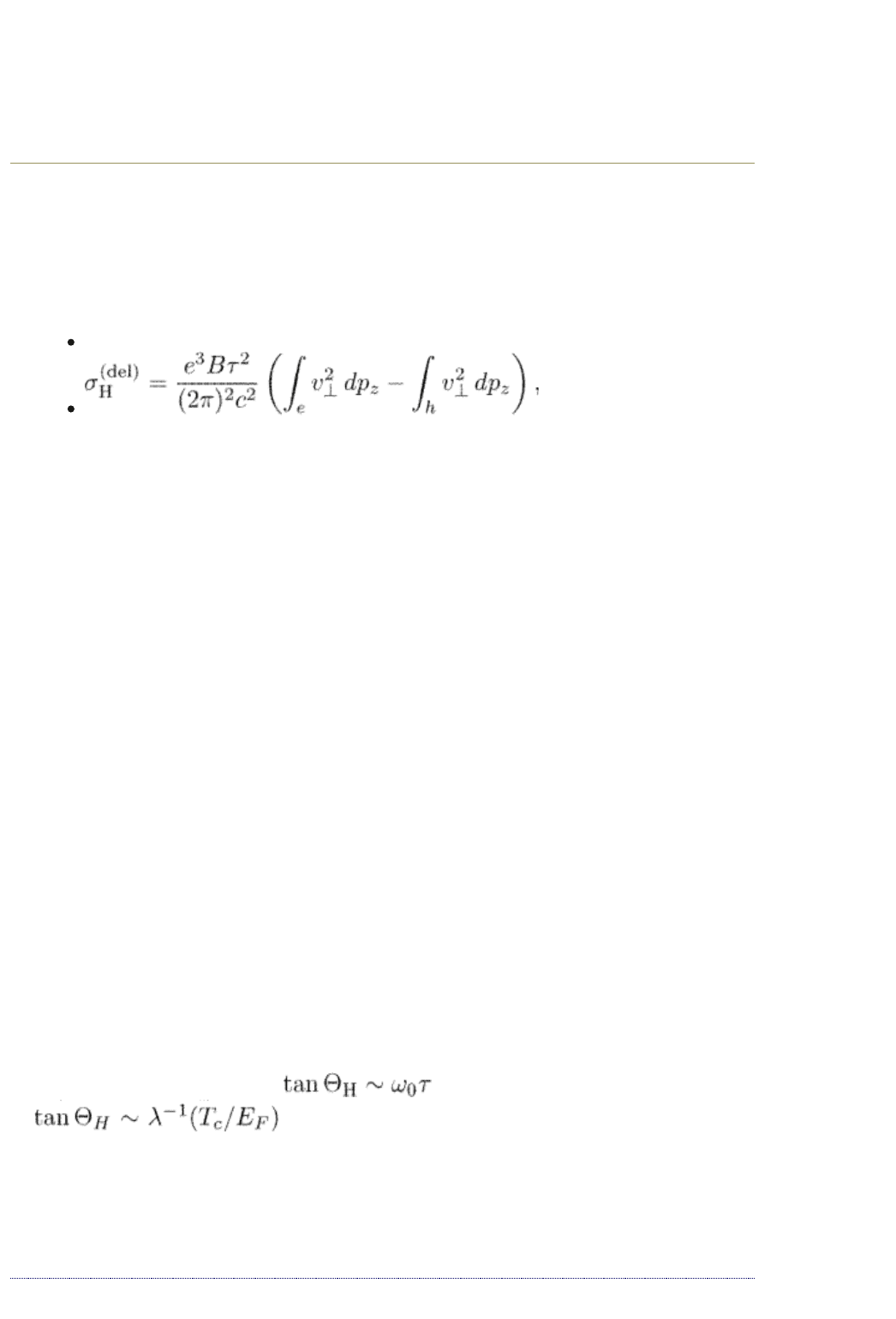
Deviation of the distribution function from equilibrium increases as T approaches
T
c
because the diffusion, relaxation becomes slow due to an increase in the
vortex core size.
We can make an interesting observation concerning the sign of the Hall effect.
Comparing eqn (14.78) with the Hall conductivity in the normal state (Abrikosov
1998):
(14.81)
we see that the sign of the normal-stale Hall conductivity can differ from that in
the superconducting state. The- reason is that the sign is determined by the
result of subtraction of electron and hole contributions which arc given by
integrals over the Fermi surface taken of the functions with different momentum
dependences. It is the cyclotron frequency in the normal state, while it is the
interlevel spacing in the superconducting state. For example, the hole
contribution in the normal state can be larger than the electron contribution,
however, electrons can give more than holes in the superconducting state. The
sign of the Hall effect in this rase will change after the transition from the normal
to the superconducting state. The sign reversal depends on the shape of the
Fermi surface; it is absent for a simple parabolic spectrum E
n
= p
2
/2m* when the
flux-How and the normal-state Hall conductivities have the same sign as was
assumed in the earlier models by Bardeen and Stephen (1965) and by Nozières
and Vinen (1966). The possibility for the Hall angle anomaly, i.e., for the sign
reversal of the Hall angle exists also within the modified TDGL model discussed in
Section 12.9.1. If was attributed to the energy dependent density of states at the
Fermi surface. In clean superconductors, the origin of the Hall angle sign reversal
is also associated with a complicated Fermi surface in the normal state. However,
the exact reason for the anomaly is slightly different: In clean superconductors,
the energy spectrum of localized excitations in the vortex core plays the most
important role. Being dependent on the shape and on the topology of the Fermi
surface, the Hall effect anomaly can appear or disappear as the chemical
potential E
F
varies for different doping levels of the superconducting material.
This behavior has been indeed observed in many experiments (see, for example,
Nagaoka et al. (1998)).
To conclude the discussion we note that the origin of the Hall effect in clean
superconductors differs from the mechanism discussed in Section 12.9. In clean
superconductors, it is the dynamics of nouequilibrium excitations which
determines the conductivity. It gives a much larger contribution to the Hall
conductivity than what we have obtained in Section 12.9. Indeed, the Hall angle
in a moderately clean limit is
while it only is
for the mechanism associated with the variation of
the pairing interaction due to the chemical potential changes induced by a
moving vortex. The latter effect does not exist within the quasiclassical
approximation. It appears due to violation of the particle–hole symmetry of eqn
(13.14); the symmetry breaks down when the density of states assumes an
energy dependence beyond the quasiclassical
end p.296
Kopnin, Nikolai, Senior Scientist, Low Temperature Laboratory, Helsinki University of
Technology, and L.D. Landau Institute for Theoretical Physics, Moscow
Theory of Nonequilibrium Superconductivity
Print ISBN 9780198507888, 2001
pp. [296]-[300]
Oxford Scholarship Online: Theory of Nonequilibrium Supe... http://www.oxfordscholarship.com/oso/private/content/phy...
第1页 共6页 2010-8-8 16:10

approximation. As a result, eqn (13.14) acquires a small term linear in the
time-derivative of the order parameter.
We outline briefly the origin of this effect. As we noticed already, it is
proportional to the inverse strength of the pairing interaction
. The 1/
contribution to the force on a vortex comes from the regular part of the
nonstationary Green function in the expression of the type of eqn (13.14). To
calculate it we need to return to the full non-quasiclassical Green functions
. Equation (13.14) becomes
(14.82)
We now expand eqn (14.82) in powers of up to the first-order terms. The
zero-order term represents the static contribution and drops out of the
nonequilibrium part of the Green function. The first-order term vanishes within
the quasiclassical approximation due to the particle–hole symmetry. As we shall
see in a moment, the non-quasiclassical correction in eqn (14.82) from the
first-order term is logarithmically divergent due to integration over d
. This
divergence is to be cut off at the BCS frequency
BCS
. Since the characteristic
frequencies are large, one can look for the Green function by expanding the
Gor’kov equation (8.20) in powers of the small ratio
/ up to the leading term.
We obtain
(14.83)
is obtained by substituting with . The operator is
defined by eqn (13.13). It is because of the full derivative with respect to d
P
that the quasiclassical contribution to eqn (14.82) vanishes. However, the
contribution becomes nonzero if one takes into account an energy dependence of
the normal–state density of states in the momentum–space volume element
After an integration over d
P
we obtain an expression which has an asymptotics
1/
for large . It diverges logarithmically and represents a correction to the
pairing interaction. Cutting the integral at
~
BCS
find the correction to the
force in the form
(14.84)
Here with the upper sign for and the lower sign for
*.
We put
/ t = –v
L
· for a moving vortex and calculate the integral in
eqn(14.84). We neglect the vector potential for an extreme type II
superconductor with a large Ginzburg–Landau parameter. The scalar potential is
PRINTED FROM OXFORD SCHOLARSHIP ONLINE (www.oxfordscholarship.com)
© Copyright Oxford University Press, 2003-2010. All Rights Reserved
Oxford Scholarship Online: Theory of Nonequilibrium Supe... http://www.oxfordscholarship.com/oso/private/content/phy...
第2页 共6页 2010-8-8 16:10
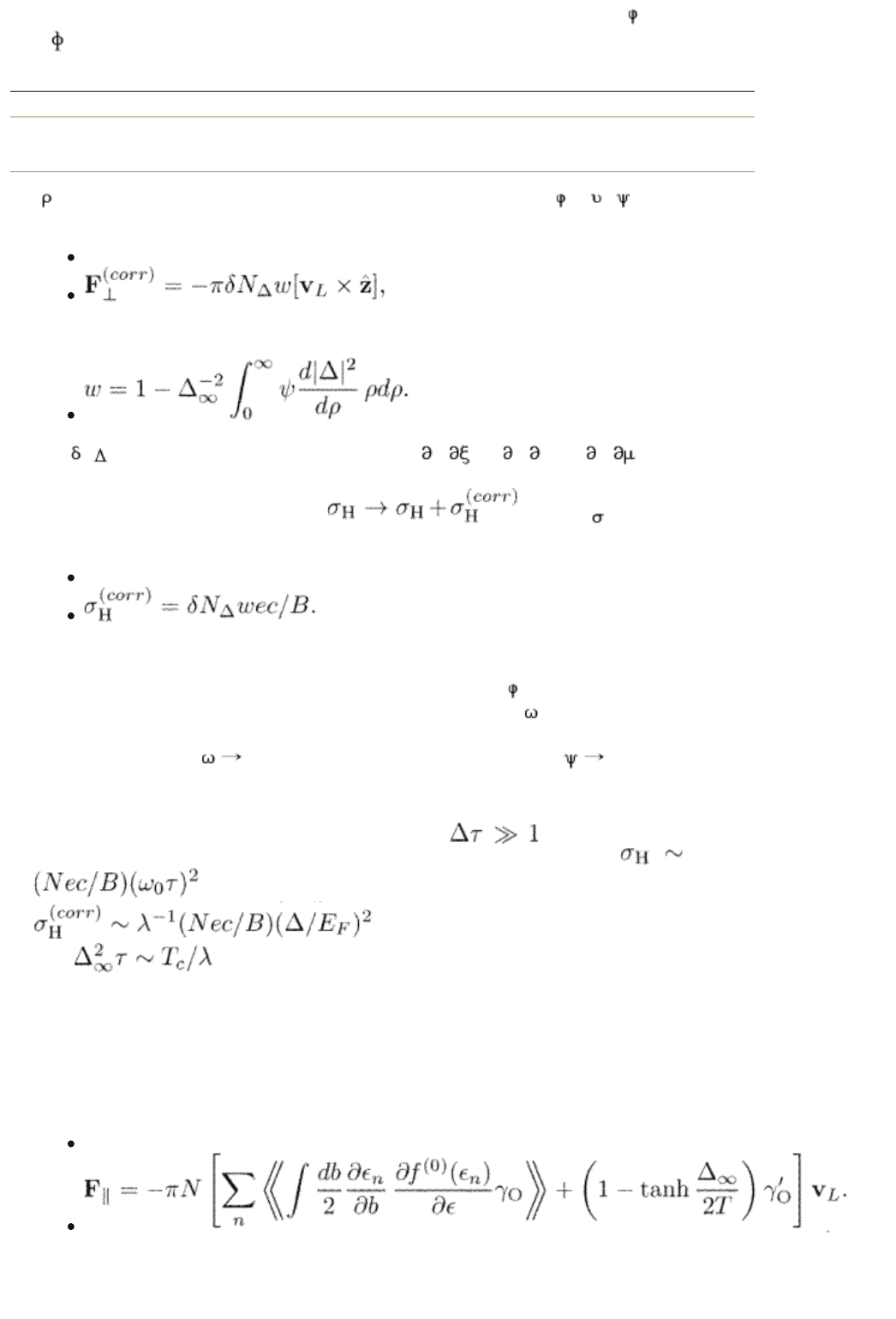
proportional to the vortex velocity v
L
. As in eqn (12.19), the potential contains
v
L
, where
end p.297
( , ø, z) are the coordinates in the cylindrical frame. Putting e =
Lø
we
observe that the correction to the force is perpendicular to the vortex velocity,
(14.85)
where
and N is defined by eqn (12.79). Note that v/
P
= v/ En = v/ the
normal state. Due to the extra transverse force eqn (14.85), the Hall
conductivity acquires a correction,
, where
H
is
determined by eqns (14.67) and (14.69) while
(14.86)
Equation (14.84) is independent of the impurity scattering because the
characteristic energies are large. It is only the potential
which depends on the
real kinetics of a superconductor. Therefore, the function,
in eqn (14.85) may
vary depending on the parameters of the superconductor. It has been shown by
Kopnin (1996) that
1 near the critical temperature when 0. In this
limit, eqn (14.86) coincides with eqn (12.78) obtained within the modified TDGL
theory and with the result of van Otterlo et al. (1995).
We emphasize once again that, in the clean limit
, nonequilibrium
excitations give a much larger contribution to the Hall effect. Indeed,
in the moderately clean case while
. It is only in a close vicinity of T
c
such
that
when the variations of the pairing interaction become
important.
14.6.3 Forces
Let us now discuss the forces acting on a moving vortex. The friction force is
determined by the longitudinal components of eqns (14.64) and (14.65):
(14.87)
It is proportional to the mean free path of excitations in the moderately clean
regime and vanishes in the superclean limit. The transverse force deserves a
PRINTED FROM OXFORD SCHOLARSHIP ONLINE (www.oxfordscholarship.com)
© Copyright Oxford University Press, 2003-2010. All Rights Reserved
Oxford Scholarship Online: Theory of Nonequilibrium Supe... http://www.oxfordscholarship.com/oso/private/content/phy...
第3页 共6页 2010-8-8 16:10
